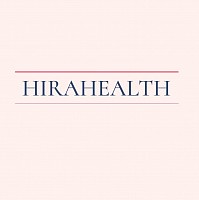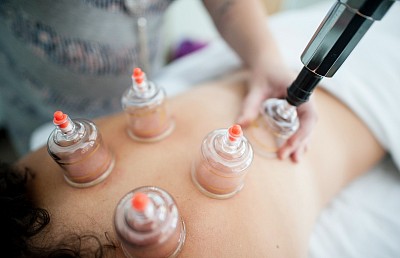Hijama! The best way to detoxify
All about hijama
Hijama, also known as cupping therapy, is an ancient form of alternative medicine that has been practiced for thousands of years. It involves the use of cups to create suction on the skin, drawing out impurities and promoting healing in the body. In recent years, hijama has gained popularity as a natural way to treat a variety of conditions, from pain management to sports injuries and even mental health issues.
The practice of hijama is believed to have originated in China, but it has been used by many cultures throughout history, including the ancient Egyptians, Greeks, and Arabs. It involves the use of small glass, plastic, or bamboo cups which are placed on the skin and suctioned using a pump or flame. The suction created by the cups draws blood to the area, promoting increased blood flow and circulation. This increased blood flow can help to decrease pain, reduce inflammation, and promote healing in the body.
Hijama is often used to treat musculoskeletal conditions such as back pain, neck pain, and joint pain, as well as sports injuries such as muscle strains and sprains. It is also used to treat respiratory conditions such as asthma and bronchitis, digestive issues such as constipation and diarrhea, and even mental health conditions such as anxiety and depression and many more.
One of the benefits of hijama is that it is a non-invasive, drug-free therapy that can be used in conjunction with conventional medical treatments. It is generally considered safe when performed by a trained professional, although there are some risks associated with the practice, such as skin irritation and bruising.
Hijama is typically performed on the back, neck, or limbs, but it can be performed on other areas of the body as well. The cups are left in place for several minutes, and then removed. Depending on the condition being treated, multiple sessions of hijama may be required for optimal results.
In conclusion, hijama is a traditional form of alternative medicine that has been used for centuries to treat a variety of conditions. While it is not a substitute for conventional medical treatments, it can be a valuable complementary therapy for those seeking natural, drug-free options for pain management and healing. If you are considering hijama, it is important to seek out a trained professional who can perform the therapy safely and effectively.
How hijama works
According to nature therapists, hijama can help to:
1. Promote blood circulation: By creating suction on the skin, hijama is believed to increase blood flow to the affected area, which can help to promote healing and reduce pain.
2. Remove toxins: Hijama is also believed to help remove toxins from the body by drawing them out through the skin.
3. Boost the immune system: Some proponents of hijama believe that the therapy can help to stimulate the immune system, which can help the body fight off infections and other illnesses.
4. Alleviate pain: Hijama is sometimes used to treat pain caused by conditions such as arthritis, back pain, and migraines.
5. Improve digestion: Some traditional practitioners believe that hijama can help to improve digestion by stimulating the digestive system and promoting the release of digestive enzymes.
Hijama therapy is generally considered safe and non-invasive when performed in a hygienic setting by an experienced professional using the right type of equipment. Hijama therapy is generally considered safe and non-invasive when performed in a hygienic setting by an experienced professional using the right type of equipment.
However, there are some potential risks and side effects to be aware of:
Infection: A common side effect of cupping is infection, which can occur if the cups are not properly sterilized or if the skin is not properly cleaned before the procedure
Skin discolouration, scars, and burns: Cupping can cause persistent skin discolouration, scars, and burns
Nausea, sweating, and dizziness: Some patients may experience nausea, sweating, and dizziness after cupping therapy
Mild soreness and pain: Mild soreness and pain in the areas where cupping is used is a common side effect of the therapy
Worsening of skin conditions: Cupping may worsen skin conditions like eczema or psoriasis
Bleeding and anemia: Rare cases of bleeding and anemia from blood loss have been reported
To minimize the risks of hijama therapy, it is important to choose a qualified and experienced practitioner who follows proper hygiene and safety protocols
Patients should also inform their practitioner of any skin conditions or other health issues they may have before undergoing the therapy
Prophetic hijama practice
Hijama, also known as cupping therapy, has a long history in Islamic medicine and is mentioned in various Islamic texts. The Prophet Muhammad (peace be upon him) himself is reported to have practiced hijama and recommended it as a treatment for various ailments.
Hijama is a preventive as well as curative therapy
Islamic medicine views hijama as a prophetic medicine and considers it to be a natural and holistic way of healing the body. The practice of hijama is believed to promote the flow of blood and lymphatic fluid, which can help remove toxins from the body and improve overall health.
In Islamic medicine, hijama is believed to have several benefits, including the following:
1. Detoxification: Hijama is believed to help remove toxins and impurities from the body, which can improve overall health and prevent illness.
2. Pain relief: Hijama is believed to help relieve pain by improving circulation and reducing muscle tension.
3. Boosting the immune system: Hijama is believed to stimulate the immune system, which can help the body fight off infections and illnesses.
4. Treating a variety of ailments: Hijama is believed to be a treatment for various ailments, including headaches, back pain, arthritis, and digestive disorders.
Islamic medicine emphasizes the importance of using hijama in conjunction with other natural remedies, such as a healthy diet and lifestyle, to promote overall health and wellbeing. It is important to note that hijama should be performed by a trained and licensed practitioner, and that it may not be suitable for everyone, especially those with certain medical conditions or who are taking certain medications.
In summary, hijama is an important part of Islamic medicine and is believed to have several health benefits. It is important to consult with a healthcare provider before trying hijama or any alternative medicine practice, especially if you have a medical condition or are taking medication.




